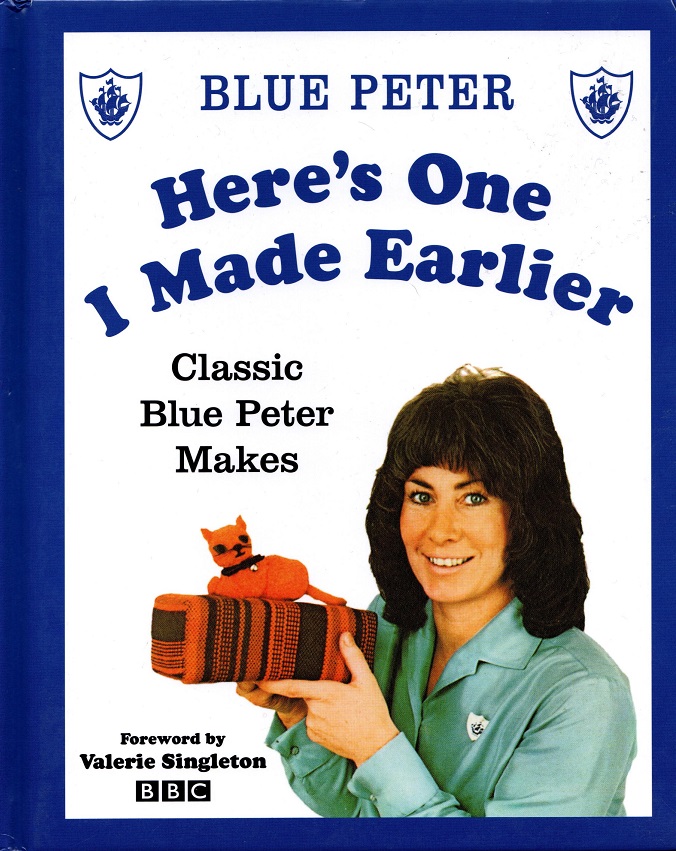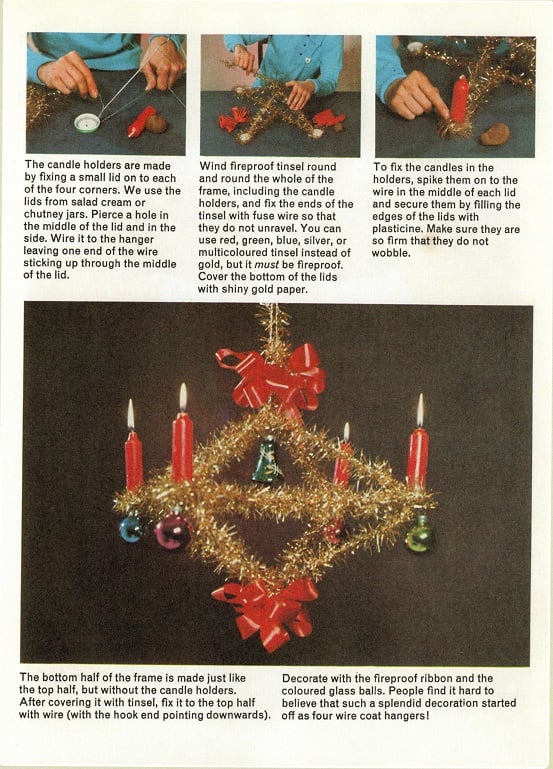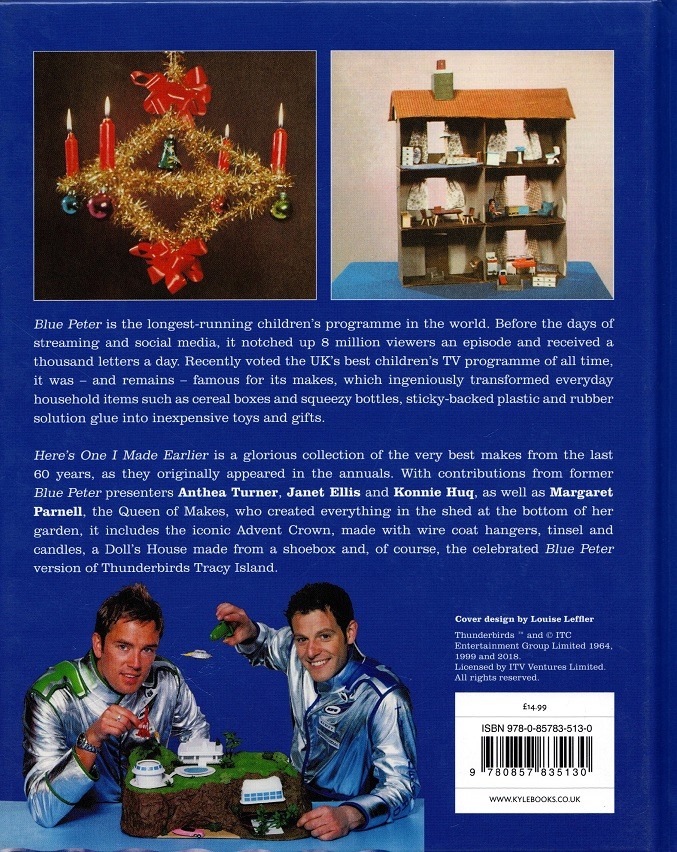The first colour edition of Blue Peter aired on 14 September 1970, and the last black and white edition on 24 June 1974. A regular feature of the 1970s was the Special Assignments, which were essentially reports on interesting topics, filmed on location. Singleton took this role, and in effect became the programme’s “roving reporter”. Blue Peter also offered breaking news on occasion, such as the 1971 eruption of Mount Etna, as well as unique items such as the first appearance of Uri Geller on British television. In May 1976, presenter Lesley Judd interviewed Otto Frank, father of Anne Frank, after he had agreed to bring his daughter’s diaries to Britain. From 1971 the summer expedition from the previous year was edited into special programmes broadcast under the title Blue Peter Flies The World, televised during the summer break when the team were recording the latest expedition. The first was shown in July 1971 and featured the expedition to Jamaica.
In 1974, the Blue Peter Garden was officially opened in a green space outside the Television Centre restaurant block. By this time, Blue Peter had become an established children’s programme, with regular features which have since become traditions. In 1978, the show celebrated its twentieth anniversary with a nationwide balloon launch from five regional cities during a special edition of the programme when Christopher Trace, Leila Williams, Valerie Singleton and Peter Purves returned. John Noakes contributed a message pre-recorded on film. At this time, Trace introduced the Blue Peter Outstanding Endeavour Award. Its theme music was updated by Mike Oldfield in 1979, and at the end of the decade a new presenting team was brought in, consisting of Simon Groom, Tina Heath and Christopher Wenner. They were overshadowed by the success of the previous two decades and failed to make as much of an impact. Heath decided to leave after a year when she discovered she was pregnant but agreed to have a live scan of her baby, something which had never been done on television before. Blue Peter was praised for this by the National Childbirth Trust who told the BBC that in ‘five minutes, Blue Peter had done more to educate children about birth than they’d achieved in ten years of sending out leaflets’. Wenner decided to leave along with Heath on 23 June 1980.
Sarah Greene and Peter Duncan both joined in 1980, and a new producer, Lewis Bronze, joined in 1982. The 1980s saw the Blue Peter studio become more colourful and bright, with the presenters gradually wearing more fashionable outfits, in contrast to the more formal appearance of previous decades. Several videos of Blue Peter were made available from 1982, the first being Blue Peter Makes, and an omnibus comprising the two weekly editions appeared in 1986 on Sunday mornings. Ahead of the show’s 25th anniversary in October 1983, BBC1 ran a series Blue Peter Goes Silver, revisiting previous summer expeditions. The 25th anniversary itself was commemorated by a documentary presented by Valerie Singleton shown on BBC1 on Sunday, 16 October 1983. This was followed the next day by a special edition of the programme when Christopher Trace presented the annual Outstanding Endeavour Award and Valerie Singleton, Peter Purves, Christopher Wenner, Tina Heath and Sarah Greene returned to celebrate the show’s birthday with the current presenting trio of Simon Groom, Peter Duncan and Janet Ellis who launched a national balloon treasure hunt. On 27 June 1988, Baxter took part in her final show, after nearly 26 years of involvement, and Bronze took her place as editor. Around this time, Blue Peter became distinctively environmentally aware and introduced a green badge in November 1988 for achievements related to the environment. Shortly before, in October 1988, the show celebrated its thirtieth anniversary with a competition to design the cover of a commemorative issue of the ‘Radio Times’ and Valerie Singleton presented the Outstanding Endeavour Award on the birthday show itself. The following year, the award was presented for the last time.
On 13 September 1984, Champion trampolinist and professional performer Michael Sundin presented for the first time, as a replacement for Peter Duncan. He had been talent-spotted by the Blue Peter team when they filmed an item on the set of “Return to OZ” (Sundin was playing the part of Tik-Tok.) After 77 appearances as a Blue Peter presenter, his contract was not renewed. It has since been explained by Biddy Baxter, that he attracted complaints from viewers, stating in her Autobiography that homophobia was not the reason for his departure, “he came across as a whinger….and an effeminate whinger to boot”, “… it was nothing to do with his sexual proclivities”. Sundin successfully continued his performing career but lost his life to an AIDS-related illness in 1989.
In 1989 (and again in 1992 and 1994), new arrangements of the theme tune were introduced. Due to falling ratings in BBC children’s programming, BBC1 controller Alan Yentob suggested airing a third edition of Blue Peter each week from 1995. This meant that it was sometimes pre-recorded; Joe Godwin, the director, suggested that the Friday edition should be a lighter version of Blue Peter, which would concentrate on music, celebrities and games. Helen Lederer presented a documentary on BBC2 to celebrate the show’s 35th anniversary Here’s One I Made Earlier, with a special edition of the regular programme featuring the returns of Leila Williams, John Noakes and Lesley Judd amongst many other presenters. Neither Noakes nor Judd had appeared in the studio since leaving the programme and Williams was returning for the first time in 15 years. A fourth presenter, Katy Hill, was introduced in 1995, but unlike earlier decades, there was little stability in the line-up, with resignations and new additions made almost every year of the decade. The 1990s also saw many more live broadcasts on location, with many shot entirely away from the studio. Blue Peter was also one of the first television series to launch a website. Oliver Macfarlane replaced Bronze as editor in 1996.
1998 marked the 40th anniversary of the TV show. Apart from two summer proms concerts, the most talked about event to celebrate the milestone was a trip behind LNER Peppercorn Class A2 60532 Blue Peter on an Edinburgh to London rail tour. The special train in question was Days out Limited’s “Heart of Midlothian” from London Kings Cross to Edinburgh Waverley on Sun 19 April 1998, with 60532 working the train from Edinburgh. Due to safety rules, none of the presenters was supposed to ride onboard the footplate during the trip. Peter Kirk, who was in charge onboard the train and who was presenting from the footplate, however, allowed Stuart Miles to travel onboard the footplate between Newark-on-Trent and Peterborough. This was the stretch of track which, on 3 July 1938, saw the world speed record for steam locomotives of 126 mph (203 km/h) set by LNER A4 Locomotive no. 4468 Mallard.
In October 1998, Richard Bacon was sacked, following reports in News of the World that he had taken cocaine. This incident followed shortly after the show’s 40th anniversary when previous presenters returned for a special programme. Those returning included Leila Williams, Valerie Singleton, John Noakes, Peter Purves, Diane Louise Jordan, Anthea Turner, John Leslie, Tim Vincent, Yvette Fielding, Caron Keating, Mark Curry, Janet Ellis, Peter Duncan, Sarah Greene, Tina Heath, Simon Groom and Christopher Wenner. Steve Hocking then replaced Macfarlane as editor, at what was regarded as a difficult period for the programme. He introduced a further re-arrangement of the theme tune and a new graphics package in September 1999.






